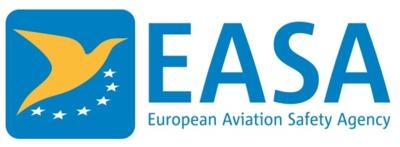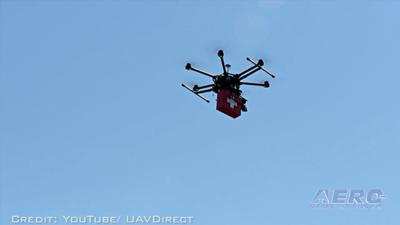Thu, Dec 24, 2015
Intended To Provide A 'Framework' For Ensuring Safety While Enabling The Industry To Grow
EASA has published a "Technical Opinion" on the safe use of drones in Europe’s civil airspace. The EASA Technical Opinion sets the direction to be followed for all future work to be done to ensure unmanned aircraft are operated safely and interact safely with other airspace users. The aim is to provide a framework that is proportionate to the activity, ensuring safety and at the same time enabling this innovative industry to continue to grow.

The opinion also serves as guidance for the European Union Member States that have no rules for small unmanned aircraft or plan to modify their existing ones, to ensure consistency as much as possible with the intent of the future EU rules. It also provides a roadmap presenting the steps to be taken in the future.
"Unmanned aircraft and the technological innovations they bring, are changing quickly the landscape for aviation. The Agency proposals ensure safety remains a priority while allowing proportionality and flexibility for new innovations," said Patrick Ky, EASA Executive Director.
The opinion includes 27 concrete proposals for a regulatory framework for operating all unmanned aircraft irrespective of their mass. The proposals focus more on how the drones will be used rather than their physical characteristics. The proposal establishes 3 categories of operation: ‘Open’, ‘Specific’ and ‘Certified’ with different safety requirements for each, proportionate to the risk. Most of the drone usage will belong to the ‘Open’ category which is foreseen for operations with limited safety risk, requiring a minimum amount of safety rules, overseen by law enforcement agencies. One of the key measures for this category will be limitation ‘Zones’, geographical areas in which use of drones will be limited or not allowed at all. To prevent unintended flight in restricted flight zones, a functionality automatically generating geographical limitations is also foreseen (i.e. geo-fencing). The more complex and risky the operation is, the more
stringent the requirements will be. For example the requirements for ‘Certified’ operations are similar to those for manned aviation.

The Technical Opinion follows the principles established by the European Commission in the Aviation Strategy published on 7 December 2015.
EASA will now work on the most appropriate set of tools - development of rules, guidance material or safety promotion – depending on what is more appropriate to each category in order to meet the overall objective to ensure safety while letting innovation develop.
(Image from file)
More News
“This recognition was evident during the TBMOPA Annual Convention, where owners and operators clearly expressed their satisfaction with our focus on customer service, and enc>[...]
Overhead Maneuver A series of predetermined maneuvers prescribed for aircraft (often in formation) for entry into the visual flight rules (VFR) traffic pattern and to proceed to a >[...]
Aero Linx: Glenn H. Curtiss Museum The Glenn H. Curtiss Museum, bearing the name of Hammondsport’s favorite son, is located on State Route 54, one half mile south of the vill>[...]
The Flight Instructor Noticed Some Engine Roughness And Diverted Toward Westwinds Airport On November 2, 2025, about 1630 mountain standard time, an experimental amateur-built Just>[...]
From 2014 (YouTube Edition) -- Disclaimer: No Matter What He Tells You, Tom Is Not A Certified Firefighting Pilot While at EAA AirVenture 2014, ANN News Editor, Tom Patton checked >[...]
 Aero-News: Quote of the Day (11.20.25)
Aero-News: Quote of the Day (11.20.25) ANN's Daily Aero-Term (11.20.25): Overhead Maneuver
ANN's Daily Aero-Term (11.20.25): Overhead Maneuver ANN's Daily Aero-Linx (11.20.25)
ANN's Daily Aero-Linx (11.20.25) NTSB Prelim: Just Highlander
NTSB Prelim: Just Highlander Classic Aero-TV: Just Like The 'Real' Thing Redbird/Disneys Dusty FlightSim
Classic Aero-TV: Just Like The 'Real' Thing Redbird/Disneys Dusty FlightSim




